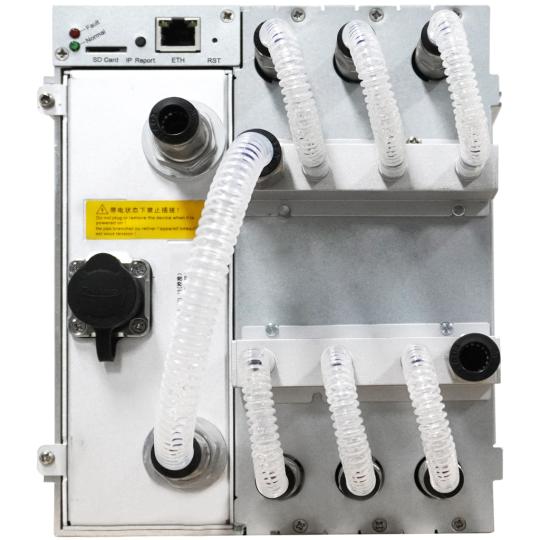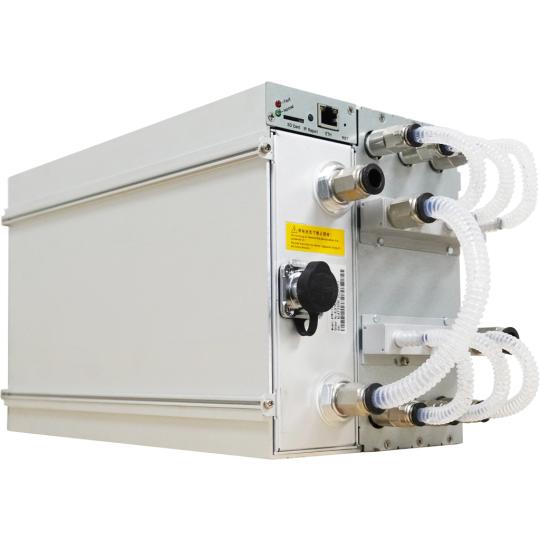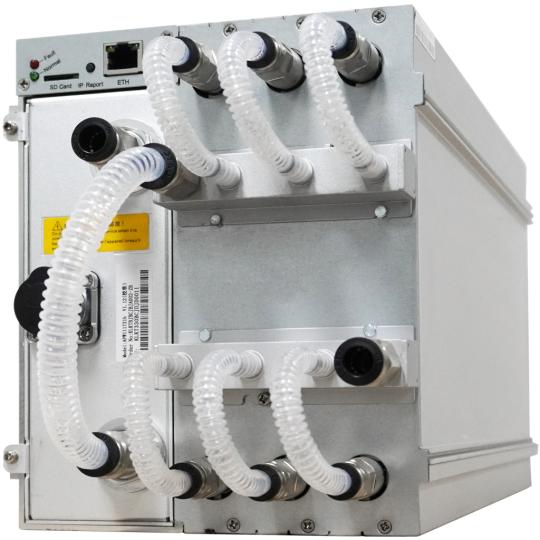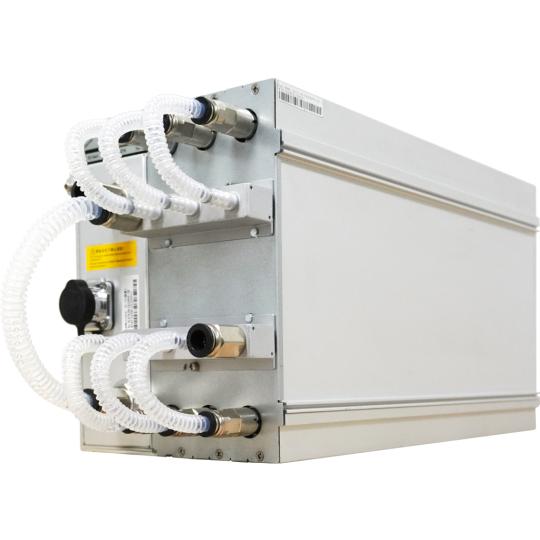How to Maintain the Bitcoin Miner S21 Hyd Cooling System?
Cryptocurrency mining has evolved significantly over the years, with miners becoming more powerful and efficient. One of the latest innovations in this space is the Bitcoin Miner S21 Hyd, a hydro-cooling mining device produced by the renowned Antminer brand. Designed for SHA256 algorithm-based cryptocurrencies like Bitcoin (BTC), Bitcoin Cash (BCH), and Bitcoin SV (BSV), the S21 Hyd boasts a remarkable hashrate of 335 TH/s and exceptional power efficiency of 16.0 J/TH. However, its standout feature is its advanced cooling system, which ensures optimal performance and longevity. In this article, we’ll dive into the practical steps and best practices for maintaining the S21 Hyd cooling system, ensuring your mining operations remain efficient and cost-effective.
Understanding the S21 Hyd Cooling System
The Bitcoin Miner S21 Hyd employs a hydro-cooling system, which uses liquid coolant to dissipate heat more effectively than traditional air-cooling methods. This system offers two cooling modes:

- Water Radiator Mode: Ideal for home or personal mining setups, where the miner is paired with a water radiator.
- External Water Source Mode: Suitable for large-scale operations, where the miner is connected to a cooling tower or centralized cooling system.
This dual-mode design makes the S21 Hyd highly versatile, catering to both individual miners and industrial-scale facilities. However, the efficiency of the cooling system depends on proper maintenance, which involves monitoring coolant conditions, ensuring adequate flow rates, and preventing potential issues like leaks or blockages.
Key Components of the S21 Hyd Cooling System
Before diving into maintenance tips, it’s essential to understand the key components of the cooling system:

- Coolant Reservoir: Stores the liquid coolant (e.g., antifreeze, pure water, or deionized water).
- Pump: Circulates the coolant through the system.
- Radiator (in water radiator mode): Dissipates heat from the coolant.
- Cooling Tower (in external water source mode): Provides centralized cooling for large-scale operations.
- Hoses and Connectors: Transport coolant between components.
- Temperature and Flow Sensors: Monitor coolant conditions to ensure optimal performance.
Regularly inspecting these components is crucial for maintaining the cooling system’s efficiency.

Step-by-Step Cooling System Maintenance Guide
1. Monitor Coolant Temperature
The S21 Hyd operates optimally when the inlet coolant temperature is maintained at 35°C (95°F). Exceeding this temperature can lead to reduced efficiency and potential hardware damage. Use the built-in temperature sensors to monitor coolant temperatures and adjust the cooling setup as needed. For example, in hot climates, consider using additional cooling fans or increasing the coolant flow rate.
2. Check Coolant Flow Rate
Adequate coolant flow is essential for effective heat dissipation. The recommended flow rate for the S21 Hyd is 20–30 liters per minute. Insufficient flow can cause overheating, while excessive flow may strain the pump. Regularly inspect the pump and hoses for blockages or wear that could affect flow rates.
3. Maintain Coolant Quality
The S21 Hyd supports multiple coolants, including antifreeze, pure water, and deionized water. Over time, coolant can degrade or become contaminated, reducing its effectiveness.
- For antifreeze: Replace the coolant every 6–12 months or as recommended by the manufacturer.
- For pure or deionized water: Check for impurities or algae growth and replace the coolant if necessary.
Additionally, maintain the coolant’s pH level (typically between 7 and 9) to prevent corrosion in the system.
4. Inspect Hoses and Connectors
Leaks are one of the most common issues in hydro-cooling systems. Regularly inspect hoses and connectors for signs of wear, cracks, or loose fittings. Replace damaged components immediately to prevent coolant leaks, which can lead to overheating and hardware failure.
5. Clean the Radiator or Cooling Tower
Dust and debris can accumulate on the radiator fins or cooling tower, reducing heat dissipation efficiency. Clean these components regularly using compressed air or a soft brush. For large-scale operations, schedule routine maintenance to ensure the cooling tower operates at peak performance.

6. Verify Pump Performance
The pump is the heart of the cooling system, circulating coolant throughout the setup. Listen for unusual noises or vibrations, which could indicate pump issues. If the pump fails, replace it promptly to avoid downtime.
7. Monitor System Pressure
The cooling system operates under specific pressure levels to ensure efficient coolant flow. Use a pressure gauge to monitor system pressure and address any deviations. High pressure could indicate a blockage, while low pressure may signal a leak.
8. Perform Regular System Flushes
Over time, mineral deposits or contaminants can accumulate in the cooling system, affecting performance. Flush the system with clean water or a specialized cleaning solution every 6–12 months to remove buildup.
9. Keep Spare Parts on Hand
Having spare parts like hoses, connectors, and pumps readily available can minimize downtime in case of component failure. Antminer’s widespread popularity ensures that spare parts are easy to source, and services like Minerfixes offer one-stop solutions for repairs and replacements.
10. Follow Manufacturer Guidelines
Always refer to the Antminer S21 Hyd user manual for specific maintenance recommendations and troubleshooting tips. Following the manufacturer’s guidelines ensures optimal performance and avoids voiding the 180-day warranty.
Benefits of Proper Cooling System Maintenance
Maintaining the S21 Hyd cooling system offers several advantages:
- Enhanced Performance: A well-maintained cooling system ensures the miner operates at peak efficiency, maximizing hashrate and profitability.
- Extended Hardware Lifespan: Preventing overheating and corrosion reduces wear and tear, extending the miner’s operational life.
- Lower Operating Costs: Efficient cooling minimizes energy consumption and reduces the need for costly repairs or replacements.
- Reduced Downtime: Regular maintenance prevents unexpected failures, keeping your mining operation running smoothly.
Real-World Applications and Insights
The S21 Hyd’s cooling system is particularly advantageous in specific scenarios:
- Hot Climates: Hydro-cooling outperforms air-cooling in high-temperature environments, making the S21 Hyd ideal for regions with hot climates.
- Large-Scale Operations: Centralized cooling systems allow multiple S21 Hyd units to share a single cooling tower, reducing infrastructure costs.
- Eco-Friendly Mining: Hydro-cooling is more energy-efficient and environmentally friendly than traditional air-cooling methods, aligning with the growing focus on sustainable mining practices.
Conclusion
The Bitcoin Miner S21 Hyd represents a significant leap forward in cryptocurrency mining technology, combining industry-leading performance with an advanced hydro-cooling system. By following the maintenance tips outlined in this article, you can ensure your S21 Hyd operates efficiently, reliably, and cost-effectively. Whether you’re a home miner or managing a large-scale operation, proper cooling system maintenance is essential for maximizing your investment and staying competitive in the ever-evolving world of cryptocurrency mining.
With its versatile cooling options, user-friendly design, and trusted brand support, the S21 Hyd is a top-tier choice for mining enthusiasts and professionals alike. By taking proactive steps to maintain its cooling system, you can unlock its full potential and enjoy long-term success in your mining endeavors.